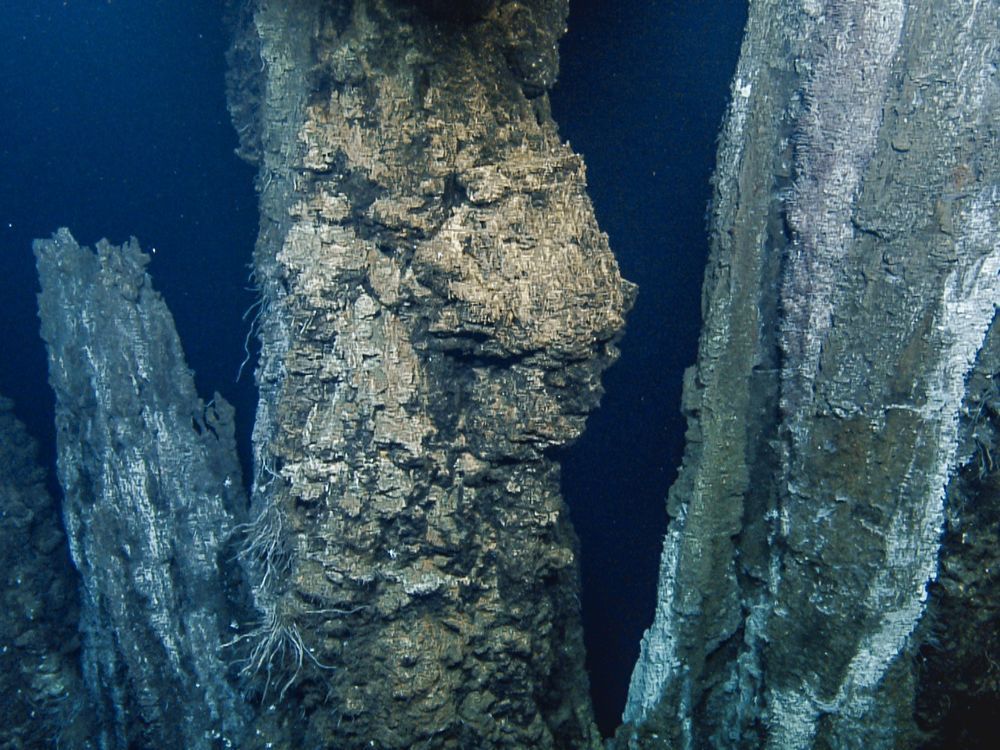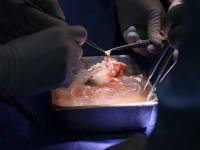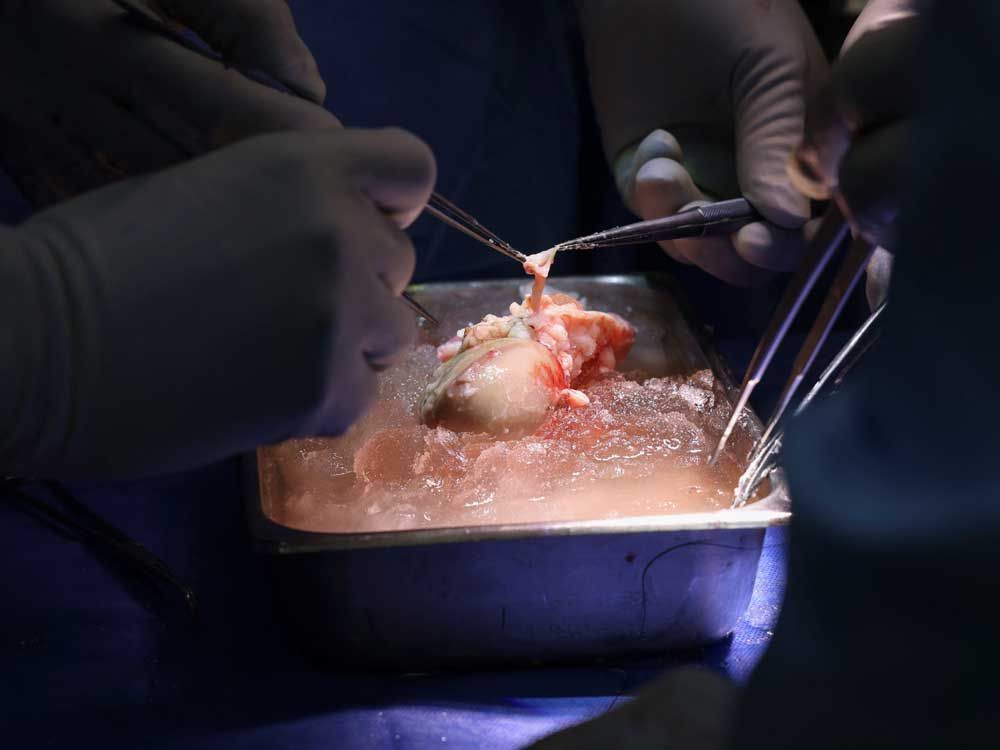Scientists have voted against a proposal to declare a new geological epoch called the Anthropocene to reflect how profoundly human activity has altered the planet.
The proposal was rejected by members of the Subcommission on Quaternary Stratigraphy, which is part of the International Union of Geological Sciences, according to three voting members of the subcommission contacted by CNN Tuesday.
The vote followed a 15-year process to select a geological site that best captures humanity’s impact on the planet. The international union’s Anthropocene Working Group, which spearheaded the effort, made a July 2023 announcement that identified the location as Crawford Lake in Ontario because of the way sediment from the lake bed reveals the geochemical traces of nuclear bomb tests, specifically plutonium, from 1950.
The vote was not unanimous, said Kim Cohen, an assistant professor of geosciences at Utrecht University in the Netherlands and a voting member of the subcommission.
“There were some abstainees. There was a minority of yeses to a majority of nos,” said Cohen, who voted in favor of the proposal.
Phil Gibbard, a professor emeritus of quaternary paleoenvironments at the Scott Polar Research Institute at the University of Cambridge in the United Kingdom, and a voting member of the subcommission, said that the “proposal for a formal Anthropocene was rejected by a 66% vote.”
However, in a statement released Wednesday, Jan Zalasiewicz, the chair of the subcommission and professor emeritus at the University of Leicester, said that unverified information had been shared with the media and the voting had been “performed in contravention” of the group’s statutes. He said he has now requested an inquiry, which could include the possibility of annulling the vote.
Scientists have voted against a proposal to declare a new geological epoch called the Anthropocene to reflect how profoundly human activity has altered the planet.
The proposal was rejected by members of the Subcommission on Quaternary Stratigraphy, which is part of the International Union of Geological Sciences, according to three voting members of the subcommission contacted by CNN Tuesday.
The vote followed a 15-year process to select a geological site that best captures humanity’s impact on the planet. The international union’s Anthropocene Working Group, which spearheaded the effort, made a July 2023 announcement that identified the location as Crawford Lake in Ontario because of the way sediment from the lake bed reveals the geochemical traces of nuclear bomb tests, specifically plutonium, from 1950.
The vote was not unanimous, said Kim Cohen, an assistant professor of geosciences at Utrecht University in the Netherlands and a voting member of the subcommission.
“There were some abstainees. There was a minority of yeses to a majority of nos,” said Cohen, who voted in favor of the proposal.
Phil Gibbard, a professor emeritus of quaternary paleoenvironments at the Scott Polar Research Institute at the University of Cambridge in the United Kingdom, and a voting member of the subcommission, said that the “proposal for a formal Anthropocene was rejected by a 66% vote.”
However, in a statement released Wednesday, Jan Zalasiewicz, the chair of the subcommission and professor emeritus at the University of Leicester, said that unverified information had been shared with the media and the voting had been “performed in contravention” of the group’s statutes. He said he has now requested an inquiry, which could include the possibility of annulling the vote.
While few scientists doubt the impact humans have made on the planet, the geological community was divided about whether the changes rose to the level of epoch, suggesting it was too soon in geological terms for such a declaration.
Some experts argued that the start of the Anthropocene could be better defined in other ways, such as the beginning of the Industrial Revolution. Others have suggested the impact of humans on Earth was better classified as a geological event that unfolds gradually over a long period of time.
The proposal was rejected by members of the Subcommission on Quaternary Stratigraphy, which is part of the International Union of Geological Sciences, according to three voting members of the subcommission contacted by CNN Tuesday.
The vote followed a 15-year process to select a geological site that best captures humanity’s impact on the planet. The international union’s Anthropocene Working Group, which spearheaded the effort, made a July 2023 announcement that identified the location as Crawford Lake in Ontario because of the way sediment from the lake bed reveals the geochemical traces of nuclear bomb tests, specifically plutonium, from 1950.
The vote was not unanimous, said Kim Cohen, an assistant professor of geosciences at Utrecht University in the Netherlands and a voting member of the subcommission.
“There were some abstainees. There was a minority of yeses to a majority of nos,” said Cohen, who voted in favor of the proposal.
Phil Gibbard, a professor emeritus of quaternary paleoenvironments at the Scott Polar Research Institute at the University of Cambridge in the United Kingdom, and a voting member of the subcommission, said that the “proposal for a formal Anthropocene was rejected by a 66% vote.”
However, in a statement released Wednesday, Jan Zalasiewicz, the chair of the subcommission and professor emeritus at the University of Leicester, said that unverified information had been shared with the media and the voting had been “performed in contravention” of the group’s statutes. He said he has now requested an inquiry, which could include the possibility of annulling the vote.
Scientists have voted against a proposal to declare a new geological epoch called the Anthropocene to reflect how profoundly human activity has altered the planet.
The proposal was rejected by members of the Subcommission on Quaternary Stratigraphy, which is part of the International Union of Geological Sciences, according to three voting members of the subcommission contacted by CNN Tuesday.
The vote followed a 15-year process to select a geological site that best captures humanity’s impact on the planet. The international union’s Anthropocene Working Group, which spearheaded the effort, made a July 2023 announcement that identified the location as Crawford Lake in Ontario because of the way sediment from the lake bed reveals the geochemical traces of nuclear bomb tests, specifically plutonium, from 1950.
The vote was not unanimous, said Kim Cohen, an assistant professor of geosciences at Utrecht University in the Netherlands and a voting member of the subcommission.
“There were some abstainees. There was a minority of yeses to a majority of nos,” said Cohen, who voted in favor of the proposal.
Phil Gibbard, a professor emeritus of quaternary paleoenvironments at the Scott Polar Research Institute at the University of Cambridge in the United Kingdom, and a voting member of the subcommission, said that the “proposal for a formal Anthropocene was rejected by a 66% vote.”
However, in a statement released Wednesday, Jan Zalasiewicz, the chair of the subcommission and professor emeritus at the University of Leicester, said that unverified information had been shared with the media and the voting had been “performed in contravention” of the group’s statutes. He said he has now requested an inquiry, which could include the possibility of annulling the vote.
‘Very disappointing’
The geologic time scale provides the official framework for our understanding of Earth’s 4.5 billion-year history. Geologists break down our planet’s history into eons, eras, periods, epochs and ages — with an eon being the largest chunk of time and an age the shortest.While few scientists doubt the impact humans have made on the planet, the geological community was divided about whether the changes rose to the level of epoch, suggesting it was too soon in geological terms for such a declaration.
Some experts argued that the start of the Anthropocene could be better defined in other ways, such as the beginning of the Industrial Revolution. Others have suggested the impact of humans on Earth was better classified as a geological event that unfolds gradually over a long period of time.
![mouldy_salmon_pie-e1709665686823[1].jpg mouldy_salmon_pie-e1709665686823[1].jpg](https://forums.canadiancontent.net/data/attachments/19/19629-f5cb3d75477650eb548a868c25db8a5b.jpg)






![ocean-earthquakes-20240311[1].jpg ocean-earthquakes-20240311[1].jpg](https://forums.canadiancontent.net/data/attachments/19/19685-dc7019e90a0c27db62cce61f52864826.jpg)

![coral-reef-20240311[1].jpg coral-reef-20240311[1].jpg](https://forums.canadiancontent.net/data/attachments/19/19695-899103df31f18d5081992e451c81a505.jpg)

![wildlife-trafficking-giant-sheep[1].jpg wildlife-trafficking-giant-sheep[1].jpg](https://forums.canadiancontent.net/data/attachments/19/19749-3f477e350efdd5e6da5351307a4655cf.jpg)



![Iceland-volcano-March16[1].jpg Iceland-volcano-March16[1].jpg](https://forums.canadiancontent.net/data/attachments/19/19752-f2d1fb4b17d3868a5d1f3a50ea17ae4f.jpg)








